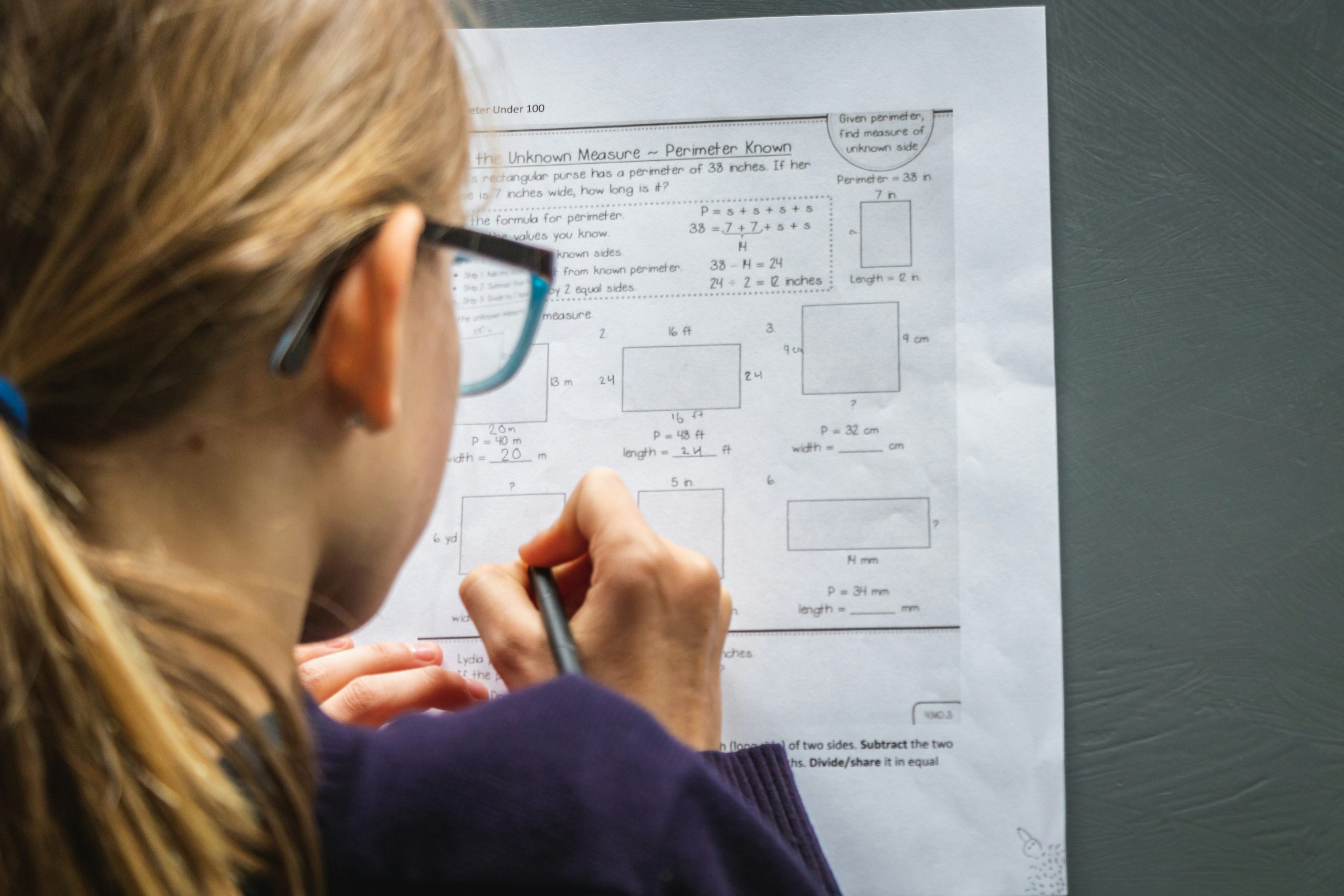Chapter 2 – Multi-Tiered Systems of Support
Multi-tiered systems of support (MTSS), which also includes Response to Intervention (RtI), is a general education framework for making data-driven decisions to support student learning and behavior. In Virginia, the Virginia Tiered Systems of Support (VTSS) is geared towards implementing and supporting MTSS throughout the state (Virginia Commonwealth University, 2024). However, there is no discernible difference between VTSS in Virginia and MTSS in other locales. While MTSS also includes Positive Behavior Interventions and Supports (PBIS), in this chapter, the focus is on academic instruction and interventions.
MTSS utilizes four components aimed at student achievement. These essential components include screening, progress monitoring, prevention support, and data-based decision making. These four components are meant to be cyclical in nature, with data driving all instructional decisions. Additionally, the MTSS framework outlines three tiers of support, with each tier increasing in intensity of instruction, length of instruction, personalization of instruction, or all of the above. These tiers are not meant to replace one another as a student moves from one to another, but rather, they are designed to build upon the previous tier.
The first step in MTSS is screening. A universal screening tool can be used with all students and may focus on only one subject area at a time, such as reading, for example. A universal screening may occur up to four times a year within an entire school. Typically, universal screening occurs in the fall, winter, and spring within the school or a specific grade level. These screeners should be reliable, valid, and efficient and should account for cultural and linguistic differences. Once results from a screener are available, students can be evaluated across benchmarks. For example, a student who is in third grade would be expected to perform at the third grade level on an MTSS screening tool. A student who is in third grade but performs below grade level, or below the expected benchmark, would be identified for additional supports. School divisions or individual schools may establish benchmarks or growth rates based on national standards or the normative cut scores developed by the assessment publisher. The benchmark, or cut score, for determining additional supports will be clearly articulated by a school division or individual school. The goal of the screening process is to identify students who are at risk for learning challenges and to subsequently provide interventions to bring students up to anticipated benchmarks.
Progress monitoring is also a central feature of MTSS used to guide tiered supports for students. Progress monitoring is an ongoing, sensitive data collection process used to assess student growth. Short assessments, often called probes, are used to determine the effectiveness of interventions. These assessments provide a precise picture of a student’s progress and growth. The results should be graphed to provide a visual representation of progress and teams should meet regularly to discuss growth and make data-driven decisions. Teams should have established decision making rules that guide intervention planning, including options indicating the need to increase the intensity of intervention, maintain the current supports, or fade intervention.

Data collected through universal screenings and progress monitoring help school teams make decisions about school-wide practices and tiered supports for individual students. Once students are identified as being at risk, they may receive additional supports through Tier 1, 2, or 3. Visually, the tiers in MTSS are often represented as a pyramid, with all students receiving Tier 1 supports and then fewer and fewer students receiving services as the pyramid moves up through Tiers 2 and 3. Again, these tiers do not stand alone, but are meant to build upon one another. Generally, about 80% of students should have their needs met in Tier 1. It is expected that approximately 15% of students will require Tier 2 supports, and approximately 5% will need Tier 3 supports. It is important to note that MTSS is a general education process, meaning that all tiers of support are provided using general education resources. Though some school divisions consider special education to be a Tier 3 support, this intensive level of customized instruction can be provided by general educators and other specialists as long as they have the training needed to implement evidence-based intervention accurately.
In each of the tiers, proactive systems should be in place to provide solid foundational instruction to all students in academic, social, emotional, and behavioral skills. Students requiring more support receive increasingly intensive and individualized intervention as they progress through the tiers. Effective MTSS requires that interventions are high-quality, supported by research, delivered by a trained professional, and implemented with fidelity. This often requires professional development to ensure educators are trained on how and when to deliver specific interventions. Many interventions require specific steps and components to work, and may not be effective if delivered incorrectly. Assessment and collaborative decision making are the links between instructional outcomes and the interventions that can be adjusted regularly and quickly (Brigham & Jenkins, 2012). Teams must be thoughtful about how and why students receive the different tiers of support. Each tier has a specific function and processes associated with that function.
Tier 1 includes core instruction, which is provided to all students. If the needs of fewer than 80% of students are met by Tier 1 instruction (i.e., more than 20% of students require Tier 2 and Tier 3 support), this is a sign that schoolwide or grade-level core instructional practices need to be analyzed to ensure they are being implemented as intended and are well-aligned with the needs of the population of learners in the school. Instruction in Tier 1 should include evidence-based practices (EBPs) and high-leverage practices (HLPs) targeting grade level standards and benchmarks. In addition to EBPs and HLPs, other features of Tier 1 supports include clearly defined learning objectives, accessible instruction (to include differentiation), data-driven decision making, utilizing curriculum aligned with state standards, and extension and enrichment for students performing above benchmarks (American Institute for Research, 2023).
Students who are not meeting benchmarks on universal screenings should be referred to a collaborative team to determine if Tier 2 support is needed. Tier 2 interventions target more individualized needs and have increased intensity relative to Tier 1 instruction. Instruction may be intensified by addressing what is taught or how content is taught (National Center on Improving Literacy, 2024). Intensifying what is taught may involve providing additional instruction in targeted academic skills (e.g., phonics, math facts, vocabulary) or teaching cognitive strategies (e.g., previewing text, mnemonics, self-monitoring). Intensifying how content is taught may include using materials that differ from those used in Tier 1 instruction, increasing the frequency or duration of instruction, decreasing group size, or any combination of those factors. In order to determine if a student requires Tier 2 intervention and what that might look like, the collaborative team should verify the screening data, even if screening tools were valid and reliable. It may be possible that factors such as fatigue, errors in administration, and/or time of day of the assessment impact outcomes, and the results may not indicate a true representation of the students’ knowledge or ability (Brigham et al., 2012). It may also be possible that a particular student does not need Tier 2 interventions, and may benefit from Tier 1 instruction with more frequent progress monitoring. Students who receive Tier 2 interventions should expect to receive Tier 1 instruction, evidence-based instruction delivered with fidelity by a qualified professional, small group instruction with 3-7 students, increased family involvement and communication, consistent and regular progress monitoring, and more frequent or intensive instruction, practice, and/ or feedback, as determined by need (American Institute for Research, 2023b). At this tier, students are monitored through progress monitoring on a weekly or bi-weekly basis.
A collaborative, student-focused team may use universal screening or progress monitoring data to determine that a student requires Tier 3 supports. Tier 3 supports are reserved for students who have the most intensive needs, often including, but not limited to, students with disabilities. These supports are for students who have ongoing needs and are not making sufficient progress or responding to Tier 1 and 2 interventions. Tier 3 supports intensify interventions that may have been offered in Tier 2 by further individualizing what is taught and how it is taught. Tier 3 intervention is customized to an individual student’s needs, though it may be provided through small group instruction. One hallmark of this tier includes weekly progress monitoring.

Universal screening and progress monitoring should lead directly to data-based, or data-driven, decision making. The information gleaned from student assessments should guide teams with deciding if interventions are working, to move students from one tier to another (up or down), to potentially identify students with disabilities, and/ or to make decisions about interventions or schoolwide needs. These decisions should be made within teams of professionals who meet on a regular and consistent basis to analyze student data.
Helpful resources about EBPs, HLPs, and MTSS are provided for additional consideration.
